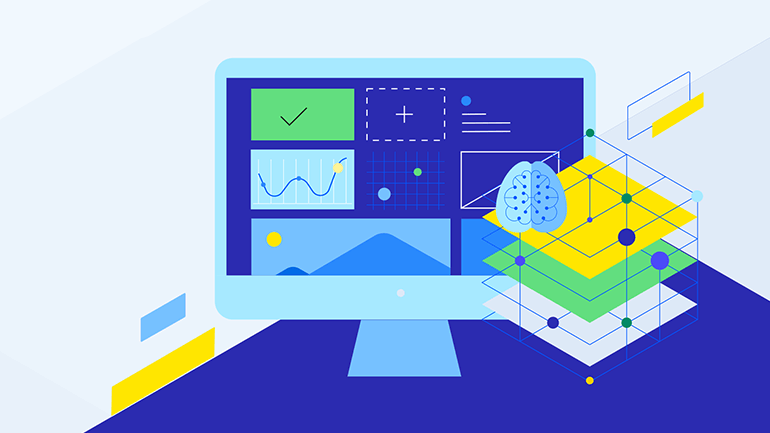The modern supermarket, a seemingly mundane landscape of aisles and checkouts, is—in reality—a swirling vortex of big data. Every scan of a barcode, every online order, every filled prescription contributes to an ever-expanding universe of information. Yet, like the early cosmos, this data often exists in fragmented clusters, its underlying connections and potential insights remaining dimly perceived. The Knowledge Graph (KG) approach is more than just a technical fix—it represents a shift in how we perceive and engage with the sprawling landscape of consumer behavior. It encourages us to ask how meaning takes shape within the digital noise, and what it truly means to understand in a world driven by data.
At its core, a Knowledge Graph is a semantic network, where entities (customers, products, locations, dietary needs, etc.) are nodes, and their relationships are the edges that bind them. Unlike traditional databases that focus on structured data in tables, Knowledge Graphs excel at representing the complex, interconnected nature of real-world phenomena. This shift mirrors a move from viewing the world as a collection of isolated objects to understanding it as a web of intricate relationships. In the context of a supermarket, this means moving beyond seeing individual transactions to understanding the tapestry of consumer behavior, the nuanced relationships between product categories and the dynamic interplay of supply and demand.
For example, during a national oat milk shortage, a Knowledge Graph could instantly identify product substitutes that align with a customer’s known dietary preferences, streamlining fulfillment while maintaining trust.
The power of a Knowledge Graph lies in its ability to infer new knowledge through these connections. If we know a customer frequently buys gluten-free bread and almond milk, and our Knowledge Graph understands that these items are often associated with a gluten-free diet, we can infer the customer likely has dietary restrictions, even if they haven’t explicitly stated what they are. This capability transcends mere data aggregation; it ventures into the realm of understanding, allowing supermarkets to offer more relevant and timely suggestions, fostering true personalization. This mirrors how humans reason: connecting scattered clues to form a new understanding.
The challenges of managing supermarket big data—the lack of a single metadata standard, the siloing of information between departments like the pharmacy and grocery and the difficulty in quickly identifying product alternatives for online orders—can be elegantly addressed by a Knowledge Graph-based approach. By establishing ontologies as the foundational structure of the Knowledge Graph, supermarkets can create a shared vocabulary and understanding of their data. This addresses the issue of inconsistent metadata, providing a “Single Source of Truth (SSOT)” that promotes data Findability, Accessibility, Interoperability and Reusability, or the FAIR principles.
Consider the implications of a “FAIR@source” Knowledge Graph in the supermarket context. Instead of “FAIRifying” data after it’s been generated, facilitating its FAIRness (Findable, Accessible, Interoperable, Reusable) at the point of origin means that product information, customer preferences and transactional data are captured with rich, semantic context from the outset. This aligns with the philosophical notion that context is crucial for true understanding . When a new product is added to the system, its metadata isn’t just a list of attributes but a set of relationships within the broader knowledge framework, making it inherently more findable and usable.
FAIR@source means metadata is enriched semantically the moment it enters the system, not retrofitted later. This proactive approach means every new data point is born with context and connections.
Furthermore, the Knowledge Graph approach facilitates integration across data silos. The regulatory walls between the pharmacy and the grocery can be navigated with greater intelligence when the underlying data, with explicit consent, can be linked within a Knowledge Graph. Understanding a customer’s health needs—within ethical and legal boundaries—can inform their grocery recommendations, promoting healthier choices and fostering greater customer well-being. This speaks to a more holistic view of the consumer, moving beyond transactional interactions to a deeper understanding of their needs and lives.
Still, building and maintaining a comprehensive Knowledge Graph involves significant challenges—from promoting data quality and consistency to managing scale, evolving business needs and integration with existing systems. Defining the core ontologies, maintaining data quality and consistency across diverse sources and managing the sheer scale and complexity of the graph require significant investment and a commitment to semantic clarity. Yet, the potential rewards—a deeper understanding of consumer behavior, optimized supply chains, hyper-personalized experiences and the ability to navigate complex regulatory landscapes—justify this intellectual and practical endeavor.
In conclusion, the Knowledge Graph approach offers a profound shift in how supermarket chains can grapple with their big data challenges. It moves beyond simple data storage and analysis to embrace a philosophy of connectedness, inference and semantic understanding . By weaving together the disparate threads of their data into a rich tapestry of knowledge, supermarkets can unlock insights that were previously hidden, leading to a more intelligent, efficient and ultimately, more human-centric experience of consumption. The path to a fully developed supermarket Knowledge Graph isn’t just about implementing the right technology—it’s also about understanding the patterns, behaviors and decisions that shape everyday shopping experiences.
Try the Progress Semaphore platform to learn how Knowledge Graphs can help your organization shift from siloed transactions to intelligent, context-driven insights for more personalized, efficient and future-ready retail experiences.

Philippe Delorme
Philippe Delorme was a Senior Account Manager for Progress Semaphore.

